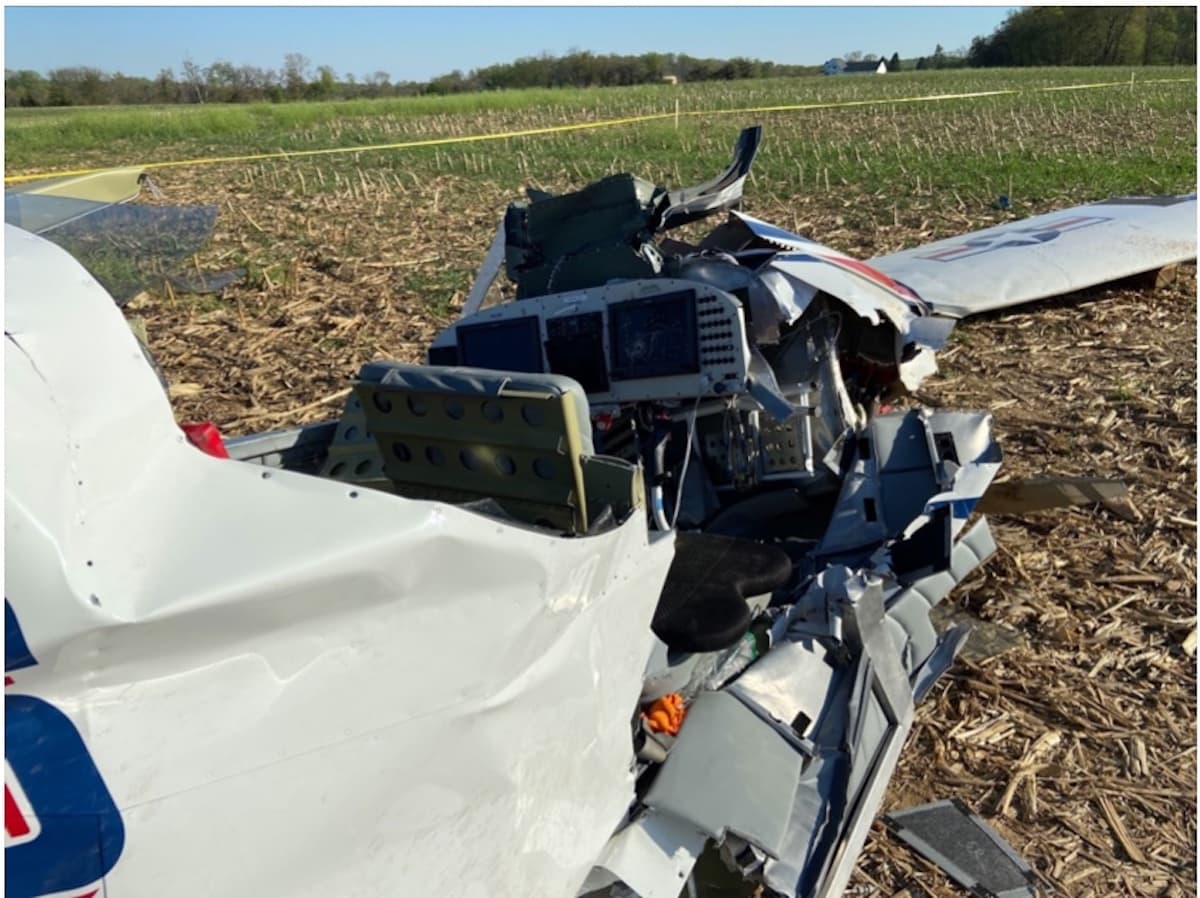
On April 13, 2023, an RV-14A was substantially damaged when it was involved in an accident near Fallston, Maryland. The private pilot was seriously injured.
The airplane crashed in a corn field about 50 feet from the approach end of runway 4 (2,200-feet-long) at Fallston Airport (W42) in Maryland. There were no known witnesses to the accident.
The wreckage came to rest upright and there was no fire. The right wing separated during the impact sequence and was located adjacent to the main wreckage. The forward fuselage was twisted and buckled. The engine remained attached to the fuselage and the propeller remained attached to the engine. The empennage exhibited minor damage. The landing gear were buckled under the fuselage.
The pilot reported that, due to his injuries, he did not recall the final approach. He reported on his NTSB Form 6120.1 (Pilot/Operator Aircraft Accident Report) that there were no mechanical malfunctions or failures associated with the accident.
The wreckage was recovered to an aircraft salvage facility where further examination was performed. The examination of the wreckage, including the flight controls, fuel system, and engine, did not reveal evidence of a malfunction or anomaly that would have precluded normal operation of the airplane.
The airplane was equipped with a Garmin G3Xi flight display system. Flight, engine, and systems information was downloaded by the investigation team.
The data indicated that the airplane took off from Harford County Airport (0W3), in Churchville, Maryland. The pilot initiated a left, climbing turn to the southwest toward W42, which was about 10 nm away.
He appeared to circle the field at W42 and then flew two approaches to Runway 22. After the second approach, he commenced a climbing left 270° turn to a right base leg for Runway 4. He turned onto final approach about 1/4 nm south-southeast of the runway threshold at about 200 feet AGL.
The G3Xi data showed that the engine speed increased during the final phase of flight, peaking at 2,580 rpm about one second before ground impact.
The airplane heading and roll parameters indicated a right turn in the 5 seconds before impact, with the roll angle increasing from about 18° right to 54° right 2 seconds before impact, before decreasing to 8° right 1 second before impact.
The vertical speed decreased from a 166 ft/min descent about 5 seconds before impact to a 1,017 ft/min descent 1 second before impact.
Probable Cause: The pilot’s failure to discontinue an unstabilized approach, resulting in an aerodynamic stall and collision with terrain.
To download the final report. Click here. This will trigger a PDF download to your device.
This April 2023 accident report is provided by the National Transportation Safety Board. Published as an educational tool, it is intended to help pilots learn from the misfortunes of others.

Yes. The “Impossible Turn” is maybe just that !!
From lower altitudes it is just that. My thoughts are unless there is lots of stored energy, airspeed/altitude, this maneuver is best left to those whom have the experience and or equipment that is capable.
Advising novice pilots to do this is insane. The actual turn back to an active runway with possible quartering tailwinds and other traffic behind is asking for an accident.
I know there is a lot of folk who suggest this is the best way to go. But it is a risky maneuver at best.
Pilots should be aware of what the departure route is and plan accordingly.
I think you mean vertical speed increased at the end.
Kudos to the NTSB investigator—one of the more thorough GA investigations I’ve seen.
I agree that it looks like he was practicing “impossible turns”—and no matter how skilled, doing that “for real” from only a couple hundred feet in the air is fraught with danger—not likely to succeed. When I’ve practiced those, or even when doing them during a flight review, it’s always been from a much higher altitude so that there’s no issue if it doesn’t work out. Better to leave the low altitude maneuvering to the experts—like ag pilots, for instance.
The track looks like he was practicing the impossible turn from 200′. The pilot did the same 270 degree turn on his initial approach but there he wasn’t climbing out; I suspect he started slower on his second impossible turn. The sim is the better place to practice from 200′. And what is with doing right traffic on his second approach when the airport does not call for right traffic?
The 12 kt crosswind pushing him left likely prompted him to tighten his turn to the right when it should have prompted a go around.